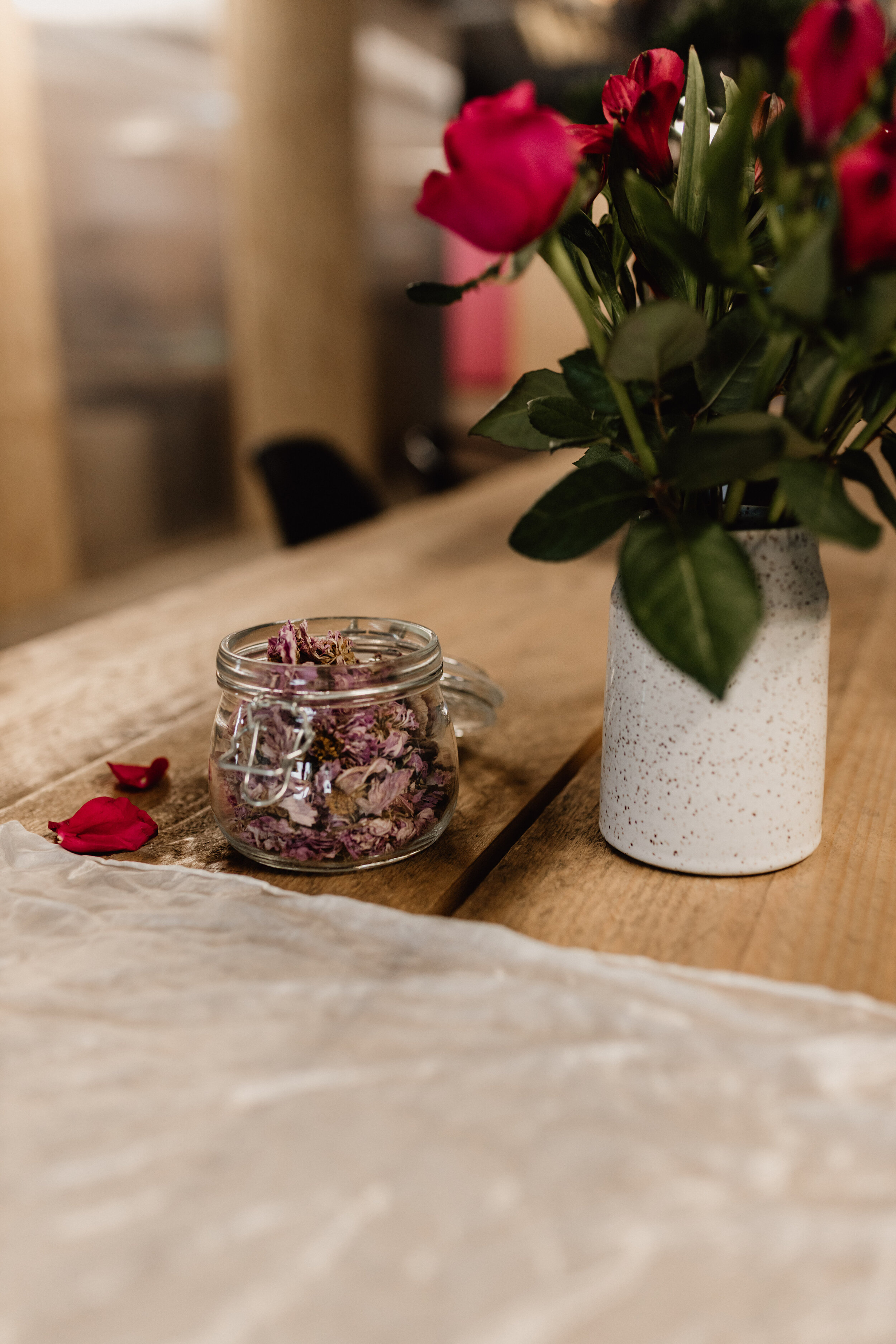If I'm thrift shopping what materials can be naturally dyed?
As someone who is looking for ways to make their wardrobe more eco-friendly, naturally dyeing thrifted / secondhand clothes is a very good option. In this article we share our top tips for finding the right items to dye and breathe new life into secondhand treasures.
Natural Dyes and Natural Fibres
If you’re new to natural dyes, we recommend reading our previous post on ‘What Are Natural Dyes’ to provide a little context before diving into this article! In a nutshell, natural dyes work best with natural fibres. Natural fibres are fibres such as cotton, cashmere, wool, silk and bamboo. When you are looking for items, you want to be looking for clothes made from these natural fibres.
Preferred Colours
Ideally, you will want to start with white and/or neutral colours to dye with. This will make it easier to manage the colour outcomes. As you develop your dye knowledge, you will start to feel comfortable over dyeing other colours to create your desired look.
Our Favourite Apps
We use apps like Depop, Vinted, Ebay or you can also go old school and visit charity shops. It’ll be easier in charity shops as you’ll be able to quickly and easily seek out the fibre content on the labels of the items that you’re interested in. You can still do this on phone apps by using search terms as:
‘White cotton dress’
‘White silk top’
‘White cotton top’ etc…
Once you have found the items you’re interested in, make sure you favourite / bookmark / like them to make sure that they are stored and you can begin messaging the sellers.
Exact Fibre Content and Condition
We send a friendly message to the sellers asking for the exact fibre content because you are looking for 100% natural fibres. If you don’t, you might not get the consistent colour courage that you are looking for. We also ask the seller about the condition of the item. You want to look out for holes and stains. If you are looking for consistent colour, you will want to seek out items that are not like old - maybe even ‘BNWT’ - Brand New With Tags or Brand New Without Tags. This is because, sometimes with vintage clothes and/or clothes that have been around on this earth for a long time, they have acquired dirt and chemicals such as deodorants, that are very difficult to shift. Even with thorough scouring (a thorough pre-wash), you may not be able to get rid of it.
If, however, you do find yourself with items that have stains, there are techniques that you can use to hide the colour inconsistencies and/or holes for example surface design techniques. Therefore, they don’t deter us because we know we can use these tools and see it as a challenge. However, if you’re new to natural dye then you may wish to avoid these complexities at first. So look for BNWT or ‘worn once/twice’ comments for signs that the clothing has only had minimal wear.
When They Arrive
The most important thing to do, before anything else, is to thoroughly scour your items. If you are using cellulose fibres such as bamboo and cotton, they can withstand a good robust wash in the machine. We put ours in the washing machine to really cleanse out any of the chemicals and dirt on the clothes. You can also do this on the stove top using a large pan and some pH neutral soap. You will then want to continue with mordanting and dyeing your clothes.
In Summary
These are our tips for thrifting! Make sure you have the fibre content confirmed before buying the item and once received, wash thoroughly before anything else. It will save you the heartache of funny coloured armpits on a gorgeously dyed dress. Been there, done that, cried a lot of frustrated tears.
Remember, once you have naturally dyed your new items, worn the heck out of them and you’ve decided that they have come to the end of their life with you, there are plenty of options for continuing their time on this earth. You can over-dye, gift, swap or you even re-list them! Depop, Vinted and Ebay have plenty of listings for naturally dyed clothes.
Finally, make sure you read and utilise the best practices in taking care of your naturally dyed clothing. For more information on this, read our blog post: ‘How to take care of your naturally dyed clothing’. You want to treat naturally dyed items as if they were your skin. Avoid harsh chemicals and sunlight, store the items in draws if you can, use pH neutral soap and just love them.
Happy thrifting!!!
Interested in finding out more?
Follow our natural dye adventures over on instagram.
Check out our shop for some handmade naturally dyed pieces.
Join our mailing list to receive 10% off your first order, access to product launches before anyone else and natural dye freebies.








